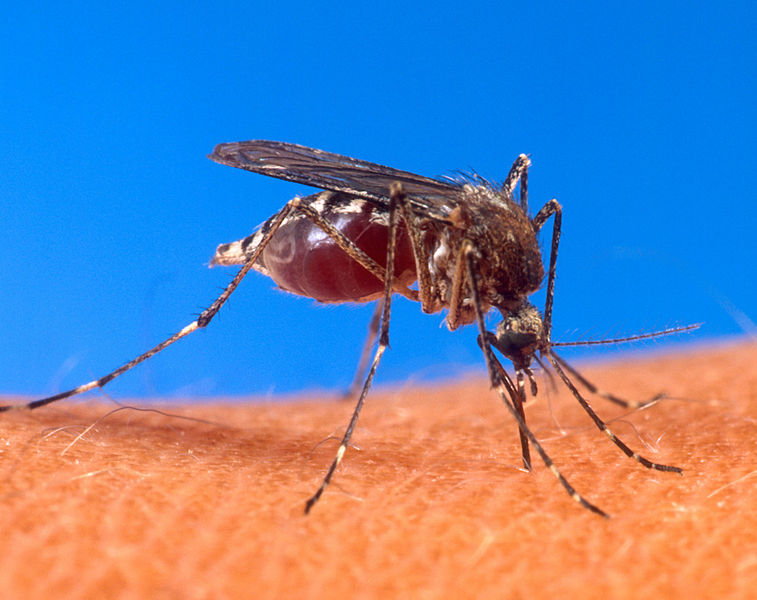
Thousands in the Caribbean have been infected with an incurable mosquito-borne illness that renders patients feverish and immobile—interminably. Why Americans could be next.
For those unable to extract sufficient anxiety from world events such as the Crimea or Syria crises, the US economy, or Rand Paul, here's a good one: an actual scary-as-shit new incurable infectious disease is heading your way soon: United States, meet chikungunya.
Chikungunya, which causes fever and severe aches, has been a big deal in public health circles for a decade or so since an explosive outbreak of the viral infection occurred on the Reunion Islands in the southwestern part of the Indian Ocean. Once introduced there, 266,000 of the island’s 770,000 people developed the clinical disease. And after the epidemic burnt out in Reunion, it moved to India, where 1.25 million cases were seen in short order. Then Italy. Then more islands in the Indian Ocean.
The swiftness and high case-rate of Chikungunya is almost unprecedented in the annals of horrible viral outbreaks. The reason is simple—the virus itself is in a genus of viruses that humans seldom have encountered—so most people have zero immunity not only to Chukungunya but to any virus faintly related to Chikungunya. It occupies an immunologic blind spot—until now.
The symptoms of chikungunya are easily understood by translating the term “chikungunya” from Kimakonde, an East African dialect: it means "to become contorted.” Though seldom lethal, people who are infected have days and weeks of fever and severe joint pain sufficiently intense to make a person double over.
As Robinson who first described the disease in the 1950s wrote, "the pain was frightening in its severity, completely immobilizing many patients.” And many patients with joint aches continue to have significant joint pain months and even years later.
Chikungunya is on the radar now is because it has arrived in the Northern Hemisphere— the Caribbean to be precise. In December 2013, the CDC announced that cases—many cases—had been identified. in St Maarten, Guadeloupe, and the British Virgin Islands, among other places. Both fulltime inhabitants as well as tourists were affected.
The likely reason that chikungunya has spread from Africa to the Indian Ocean and now to the Americas is an unsettling example of the inter-relatedness of countries throughout the world and that old favorite—the unintended consequences of seemingly harmless activities.
The story centers on Aedes albopictus, aka the Tiger mosquito, a newcomer to the New World. For centuries, our locavore mosquito was the Anopheles, transmitter of malaria, West Nile, and other diseases, as well as the cause of countless summertime bug-bites. The United States once was a pit of malaria-toting mosquitoes from the South all the way up to Philadelphia and beyond. Indeed, malaria figured heavily in the Revolutionary War and may have helped defeat the Redcoats. The National Malaria Eradication Program mounted in Atlanta after World War II used DDT to vanquish the mosquito and made America malaria-free. The effectiveness of the effort led to establishment of a public health headquarters—now the CDC—in Atlanta, at the time a fledgling southern city.
In contrast to the veteran Anopheles, the Aedes mosquito did not arrive until the 1980s. Its path here is almost comic: evidence indicates that the mosquito was brought because of the international used tire trade. It turns out that millions of bald tires are moved from rich countries to poor countries and retreads sent back from the poor to the rich. Millions, seriously—check this out. Used, hubcap-free tires are well known to sequester standing water—a perfect breeding ground for the next generation of mosquitos. The problem is bad enough that entomologists are looking for how best to apply insecticides to the rubber in tires. (For example, see “Efficacy of alpha-cypermethrin and lambda-cyhalothrin applications to prevent Aedes breeding in tires” in Journal of the American Mosquito Control Association).
Once the mosquitos had set up shop in the Northern Hemisphere, it was inevitable that the virus would arrive and Chikungunya transmission begin. Similarly— sorry—it is inevitable that Chikungunya will move through the rest of Caribbean and find its way to Florida, Texas and the rest of the muggy South unless an intense mosquito eradication is undertaken. Such a program will be expensive, require thoughtful planning and coordination between states both red and blue, involve harsh pesticides and a re-consideration of the necessity of an international tire resale business. Control also will need faster more widely available diagnostic tests, smoother healthcare delivery, and exploration into new vaccines. In other words, unless we as a country become contorted in a fashion not seen since the great 20th century public health triumphs against diseases such as polio, we soon may be contorted by Chikungunya.

No comments:
Post a Comment